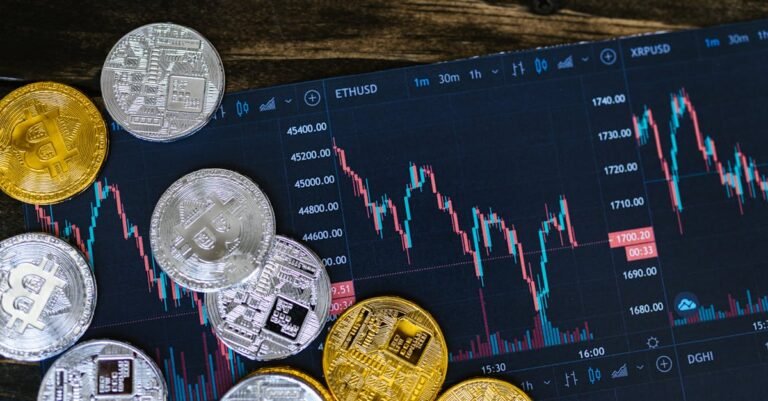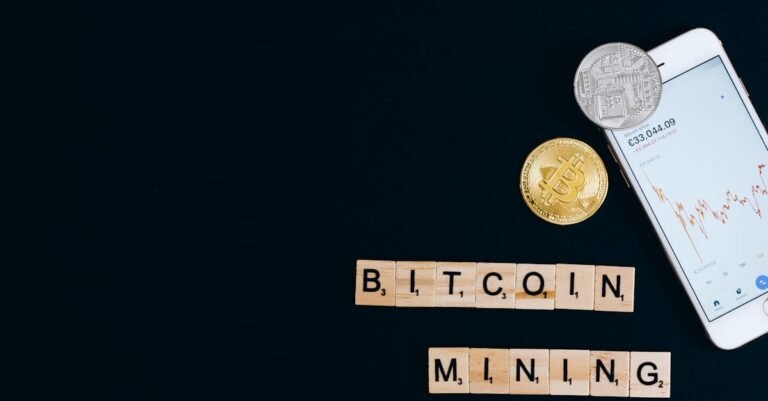Beyond the Hype: Choosing Altcoins Based on Real Utility
Hey everyone! Ever feel like diving into the world of altcoins is like navigating a giant, flashy, and sometimes confusing digital amusement park? You see thrilling rides (the massive pumps!), hear exciting promises, but it’s hard to know which attractions have real substance and which are just smoke and mirrors. It’s easy to get caught up in the hype, chasing the next big thing purely based on social media buzz or soaring prices. But what if there’s a smarter way to explore this park, a way focused on finding projects with staying power?
That’s where *utility* comes in. Forget just looking at the price chart for a moment. Today, we’re going on a journey to understand how to choose altcoins based on what they *do* – their real world function, the problems they solve, and the actual value they bring to the table. Think of it like choosing a tool from a toolbox. You don’t just grab the shiniest one; you pick the one designed for the job you need to do. Investing in crypto based on utility means looking beyond speculation and focusing on projects building something meaningful and, hopefully, lasting. Ready to dig deeper than the hype? Let’s get started!
What Exactly is Altcoin Utility and Why Does it Matter?
Okay, let’s break down this buzzword: *utility*. In the simplest terms, the utility of an altcoin refers to its *usefulness*. What practical purpose does it serve within its specific blockchain network or application? What problem does it help solve? Why would someone actually *need* to acquire and use this token, other than just hoping its price goes up? Think of it this way: Bitcoin’s primary utility is often seen as a store of value and a medium of exchange (digital gold, if you will). Ethereum’s utility comes from being the fuel (gas) needed to run decentralized applications and smart contracts on its massive network. Utility is all about the *function*.
This stands in stark contrast to assets often dubbed “meme coins” or projects with no clear purpose beyond speculation. While those can sometimes experience wild price swings (both up and down!), their value is often driven entirely by social media trends, community hype, and the hope that someone else will buy it for more later (often called the “greater fool theory”). They lack a fundamental reason to exist beyond the initial excitement. Choosing altcoins based on utility means looking for projects where the token is an integral part of a functioning ecosystem, something that provides a tangible service or capability.
But why should you, as someone exploring the crypto space, care so much about utility? It boils down to a few critical factors:
- Long Term Sustainability: Projects built around solving real problems or providing valuable services have a much higher chance of sticking around. Markets go up, markets go down, hype fades. But if a project offers something genuinely useful that people or businesses need, it has a foundation for survival and growth that isn’t solely dependent on market sentiment. Think about companies in the traditional world – those that provide essential goods or services tend to weather economic storms better than those based on fleeting trends. Utility provides resilience.
- A Fundamental Driver of Value: When a token has real utility, demand for it isn’t just speculative. People need the token to *do* something – pay transaction fees, vote on proposals, access services, play a game, secure the network. This inherent demand, tied to the usage and growth of the underlying platform, can create a more stable and justifiable value proposition. If the platform becomes more popular and useful, the demand for its utility token naturally increases, potentially leading to price appreciation based on fundamentals, not just hype.
- Potential for Reduced Volatility: Let’s be clear, *all* crypto assets are volatile. However, a token with strong, measurable utility might experience *less* irrational volatility compared to purely speculative assets. Its price might find a certain level of support based on the actual demand from users needing the token for its intended purpose. While it will still fluctuate with the broader market, the utility aspect can act as a sort of anchor.
- The Power of Network Effects: Useful platforms attract users. More users attract developers building more tools and applications. More tools and applications attract even more users and potentially businesses or partners. This positive feedback loop is called a network effect. As the ecosystem grows around a utility focused project, the value of the network – and potentially its native token – increases significantly. Think of social media platforms; the more people use them, the more valuable they become for everyone. Strong utility is often the catalyst for powerful network effects in crypto.
Now, let’s dive into the different *types* of utility you might encounter. It’s not just one size fits all; altcoins can be useful in many diverse ways:
Platform/Network Fees: This is one of the most fundamental types of utility, especially for Layer 1 blockchains (the base layer networks like Ethereum, Solana, Cardano, Avalanche) and some Layer 2 scaling solutions built on top of them. To perform any action on these networks – sending tokens, interacting with a smart contract, minting an NFT – users typically need to pay a transaction fee, often called “gas.” This fee is paid in the network’s native token (ETH for Ethereum, SOL for Solana, ADA for Cardano, AVAX for Avalanche, MATIC for Polygon). Why is this needed? Because processing transactions requires computational resources from the network’s validators or miners. These fees compensate them for their work in securing the network and validating transactions. This creates constant demand for the native token, directly proportional to the activity on the network. If a blockchain becomes a hub for popular applications, the demand for its native token to pay gas fees can soar.
Governance: Welcome to the world of decentralized decision making! Many projects, particularly in Decentralized Finance (DeFi), issue governance tokens. Holding these tokens gives you the right to vote on proposals related to the project’s future. This could include decisions on:
- Upgrading the protocol’s code
- Changing platform fees or parameters
- Allocating funds from the project’s treasury
- Adding support for new assets or features
- Electing council members
Examples include UNI for Uniswap (a decentralized exchange), AAVE for Aave (a lending protocol), and MKR for MakerDAO (which governs the DAI stablecoin). The idea is to decentralize control away from a core team and put it into the hands of the community and users. How does it work? Typically, someone proposes a change, token holders vote (often, one token equals one vote, though some models vary), and if the proposal reaches a certain threshold (quorum) and passes, it gets implemented. This utility is crucial for projects aiming for true decentralization. The value here comes from the power to influence a potentially valuable protocol. However, it’s important to assess how truly decentralized the governance really is – sometimes a small number of large holders (“whales”) can dominate the voting process.
Staking and Network Security: Many newer blockchains use a consensus mechanism called Proof of Stake (PoS) or one of its variants. Instead of miners solving complex puzzles (Proof of Work like Bitcoin), validators are chosen to confirm transactions and create new blocks based on the amount of the network’s native token they have “staked” or locked up as collateral. By staking their tokens, users actively participate in securing the network and validating transactions. In return for this service and commitment, they receive staking rewards, usually paid out in the same native token (e.g., staking ADA on Cardano, DOT on Polkadot, ATOM on Cosmos, SOL on Solana). This utility serves a dual purpose: it secures the network by making attacks expensive (an attacker would need to acquire a huge amount of staked tokens) and it incentivizes long term holding of the token, as users lock up their assets to earn rewards. This reduces the readily available supply on the market. Be aware, though, staking often comes with risks like “slashing” – where validators can lose a portion of their staked tokens if they act maliciously or fail to perform their duties correctly.
Medium of Exchange within an Ecosystem: Some altcoins are designed to be the primary currency used *inside* a specific platform, game, or virtual world (metaverse). Think of it like buying proprietary tokens at an amusement park to use on rides and games. For example:
- MANA: Used to buy virtual land (LAND) and other digital goods and services within the Decentraland metaverse.
- SAND: The currency for transactions and interactions within The Sandbox metaverse ecosystem.
- AXS (Axie Infinity Shards): Used for breeding digital pets (Axies) and participating in the governance of the Axie Infinity game universe.
- Flow (FLOW): Designed for NFT collectibles and crypto games like NBA Top Shot, used for transactions within its ecosystem.
The utility here is creating a closed loop economy. Users need the token to participate fully in the platform’s core activities. The success of the platform – its user base, transaction volume, popularity – directly influences the demand for its internal currency. The key question is whether using a specific token offers advantages over just using a common cryptocurrency like ETH or a stablecoin within that ecosystem. Often, it’s about controlling the internal economy, offering specific rewards, or integrating deeply with the platform’s mechanics.
Access Tokens: Certain tokens grant holders special privileges or access to specific features, services, or opportunities. It’s like having a VIP pass. Examples include:
- BNB (Binance Coin): Offers reduced trading fees on the Binance exchange, access to token sales on Binance Launchpad, and is used for fees on the BNB Smart Chain.
- CHZ (Chiliz): Used to buy Fan Tokens on the Socios platform, which then give fans voting rights and access to exclusive experiences related to their favorite sports teams.
- Nexo (NEXO): Holding NEXO tokens can provide benefits like lower interest rates on loans, higher interest rates on savings, and dividends on the Nexo platform.
This utility model creates demand by offering tangible benefits and exclusivity to token holders, incentivizing them to acquire and hold the token to enjoy these perks.
DeFi Specific Utility: The world of Decentralized Finance is packed with tokens serving unique functions within lending, borrowing, trading, and yield generation protocols:
- Lending/Borrowing Collateral & Interest: Platforms like Aave and Compound allow users to lend their crypto assets to earn interest or borrow assets by providing collateral. Their native tokens (AAVE, COMP) often serve governance functions but can also sometimes be earned as rewards for participating in lending/borrowing activities.
- Liquidity Provision Rewards: Decentralized Exchanges (DEXs) like Uniswap, Sushiswap, or PancakeSwap rely on users (Liquidity Providers or LPs) to deposit pairs of tokens into liquidity pools. Traders then use these pools to swap assets. LPs earn trading fees and often receive the DEX’s native token (UNI, SUSHI, CAKE) as an additional reward for providing this crucial liquidity. This incentivizes participation but comes with risks like *impermanent loss*, which is a potential difference in value between holding tokens in a pool versus just holding them in your wallet (it’s complex, but important to understand if providing liquidity!).
- Yield Farming Tokens: This involves complex strategies where users move their crypto assets between different DeFi protocols, often staking or lending them to earn multiple layers of rewards, usually paid out in the protocols’ native tokens. This can be highly lucrative but also very risky.
DeFi utility tokens are deeply integrated into the financial mechanics of their respective platforms.
NFT and Metaverse Utility: While we often think of NFTs as digital art, their utility is expanding rapidly. An NFT can represent ownership of in game items, virtual land parcels, event tickets, membership passes, or even intellectual property rights. The altcoins associated with these NFT projects or metaverses might be needed for:
- Minting (creating) NFTs
- Trading NFTs on marketplaces
- Governing the metaverse or game world
- Powering in game economies
The utility of the altcoin is tied to the vibrancy and functionality of the NFT ecosystem or metaverse it supports.
Real World Asset (RWA) Tokenization: This is an emerging area where projects aim to represent traditional assets like stocks, bonds, real estate, or commodities on the blockchain using tokens. The associated altcoin might be used for platform governance, transaction fees within the RWA ecosystem, or staking to secure the platform. The potential utility is huge – fractional ownership of expensive assets, increased liquidity for traditionally illiquid assets like real estate, and more efficient settlement. However, regulatory hurdles and technical challenges are significant.
Understanding these different types of utility is the first step. But remember, just because a token *claims* to have utility doesn’t automatically make it valuable. The crucial link is *demand*. Is the platform or service genuinely useful? Are people actually using it? Does the token play an essential role that can’t easily be bypassed? The *strength*, *necessity*, and *adoption* of the utility are what ultimately matter for long term value creation. A token needed to pay fees on a ghost town blockchain has no real utility driven demand.
How to Research and Evaluate Altcoin Utility Like a Pro
Alright, so we understand *what* utility is and *why* it’s important. Now comes the exciting part: how do you actually roll up your sleeves and figure out if an altcoin’s utility is legitimate, valuable, and likely to drive long term growth? This requires some detective work – what the crypto community famously calls “Doing Your Own Research” or DYOR. It’s not about finding guaranteed winners (those don’t exist!), but about making informed decisions based on evidence rather than hype. Let’s break down a practical research process:
Step 1: Identify the Problem – What’s the Point?
Before you even look at the token, understand what the project is trying to achieve.
- What specific problem is this project trying to solve? Is it a niche issue or something with broad implications? Examples: High transaction fees on Ethereum, lack of transparency in supply chains, inefficiency in cross border payments, centralized control over user data, making illiquid assets tradable.
- Is it a *real* problem that people actually care about? Be wary of projects that seem like a “solution looking for a problem.” Sometimes, tech is built just because it’s cool, not because it solves a pressing need.
- Is a blockchain based solution significantly better than existing, non crypto solutions? This is crucial. Why use a complex, potentially slower, or harder to use blockchain solution if a simple database, existing app, or traditional service works just fine or even better? The blockchain component needs to offer a distinct advantage – perhaps decentralization, censorship resistance, transparency, user ownership, or unique token incentives.
Example: Let’s say Project X aims to decentralize social media. The problem is real: centralized platforms control data, censor content, and monetize user attention unfairly. A blockchain solution could offer user data ownership, censorship resistance via decentralized storage, and crypto incentives for creators. Here, the blockchain *could* offer tangible benefits over traditional platforms like Facebook or Twitter. Now, compare that to a project using blockchain to, say, track your daily steps – existing fitness apps do this perfectly well without blockchain complexity.
If you can’t clearly articulate the problem the project solves and why blockchain is the *right* tool for the job, that’s a potential red flag right there.
Step 2: Analyze the Solution and the Token’s Role – Is the Token Essential?
Once you understand the problem, examine how the project proposes to solve it and, critically, where the native token fits in.
- How does the proposed solution work? You don’t need to be a PhD computer scientist, but you should grasp the basic mechanics. Does it involve a new blockchain, a decentralized application (dApp), smart contracts, oracle networks?
- How is the token integrated into this solution? Refer back to the types of utility we discussed (fees, governance, staking, access, etc.). Is the token’s role clearly defined and logical within the system?
- Is the token *necessary* for the platform/solution to function effectively? This is the million dollar question (sometimes literally!). Could the platform achieve its goals just as easily using Bitcoin, Ethereum, or even a stablecoin like USDC or USDT instead of its own native token? If the token feels “tacked on” – perhaps primarily used for initial fundraising (ICO/IDO) or vague “rewards” without core functionality – its utility might be weak or artificial.
- Green Flags: The token is indispensable for core operations (e.g., paying mandatory network fees on a Layer 1, required for staking to secure the network, the only way to vote in a genuinely decentralized governance system, essential for interacting with the main features of a dApp). The token’s usage directly contributes to the health, security, or value proposition of the network.
- Red Flags: The token’s main use case seems to be rewarding early adopters or speculative trading. The utility could easily be fulfilled by an existing major crypto. The documentation struggles to explain *why* the native token is needed beyond fundraising or simple rewards.
Step 3: Dive into the Whitepaper and Documentation – Read Between the Lines
The project’s whitepaper is often considered its foundational document. While they can be dense, reading (or at least skimming strategically) is vital. Look beyond the marketing fluff.
- What to Look For:
- Clear Problem Statement & Solution: Does it align with your findings from Step 1 & 2?
- Technology Explanation: Does it make sense? Is it innovative or just rehashing existing tech?
- Tokenomics (Crucial!): This section details the economics of the token. We need to go deeper here.
- Roadmap: Are there clear, specific, and realistic milestones? What has been achieved so far? What’s planned for the future? Vague roadmaps are a concern.
- Team Information: Who is behind the project? (More on this in Step 4).
- Read Critically: Is the language overly complex and filled with jargon just to sound impressive? Are the claims backed by evidence or logic? Does the project acknowledge potential challenges and risks? Be skeptical of papers promising to revolutionize everything without addressing the difficulties.
- Tokenomics Deep Dive: This deserves its own focus. Understanding the supply, demand, and flow of the token is critical to evaluating its long term potential.
- Supply Dynamics:
- Total Supply & Max Supply: Is there a fixed maximum number of tokens that will ever exist (like Bitcoin’s 21 million), making it potentially deflationary over time? Or is the supply inflationary, meaning new tokens are continuously created (like for staking rewards)? If inflationary, what is the rate, and is it sustainable or excessive?
- Circulating Supply: How many tokens are currently available on the market? A large difference between total supply and circulating supply might mean many tokens are locked up (good, potentially) or could be released later, causing price pressure (bad, potentially).
- Token Distribution:
- Allocation: How were the tokens initially distributed? Was there a large pre mine for the team and early investors? What percentage went to public sale, community rewards, ecosystem development, etc.? A very high allocation to insiders (e.g., >30-40%) can be a red flag, as they might sell off large amounts once tokens unlock, crashing the price. Fair launch projects (minimal or no insider allocation) are often viewed favorably, though they are rarer.
- Vesting Schedules: Are the tokens allocated to the team and early investors locked up for a specific period (vesting)? Longer vesting schedules (e.g., 2-4 years with gradual unlocking) are generally better as they prevent immediate dumping and align incentives for the long term. Check the details – when do unlocks happen and how much is unlocked?
- Demand & Value Accrual Mechanisms:
- Utility Driven Demand: As discussed in Step 2, how does the platform’s usage generate demand for the token? (e.g., fee payments, staking requirements).
- Burning Mechanisms: Does the protocol regularly destroy (burn) a portion of the tokens, for instance, by burning part of the transaction fees (like Ethereum’s EIP 1559 or BNB’s burns)? Burning tokens permanently removes them from circulation, reducing supply and potentially making the remaining tokens more valuable (deflationary pressure).
- Staking Rewards & Inflation: If it’s a Proof of Stake coin, what are the rewards for staking? Are these rewards coming from transaction fees (more sustainable) or just new token issuance (inflation)? High inflation can devalue the token over time if demand doesn’t keep pace.
Tokenomics tells the story of the token’s economic design. A well designed model balances incentives, controls supply, and links the token’s value to the platform’s success. Poor tokenomics can undermine even a project with great technology.
- Supply Dynamics:
Step 4: Assess the Team and Backers – Who’s Driving the Bus?
An idea is only as good as the team executing it.
- Who are they? Look for the founders, core developers, and advisors. Do they have relevant experience in blockchain, software development, cryptography, finance, or the specific industry the project targets? Check their LinkedIn profiles, past projects, and contributions. Experienced and reputable teams are a huge plus.
- Transparency: Is the team public and identifiable? Do they actively communicate with the community (e.g., through AMAs – Ask Me Anything sessions, blog posts, developer updates)? Anonymous teams are a major red flag in most cases, as there’s no accountability.
- Investors and Partnerships: Who has invested in the project? Backing from well known and respected venture capital firms (like Andreessen Horowitz (a16z), Paradigm, Sequoia, Pantera Capital) can be a strong signal of confidence (though not a guarantee of success). Meaningful partnerships with established companies or other crypto projects can also validate the project and help with adoption. Be wary of partnerships that seem purely promotional (“X project is proud to partner with Y!” with no clear collaboration details).
Step 5: Evaluate Community and Ecosystem Growth – Is Anyone Using This Thing?
A project needs users and activity to thrive.
- Community Vibe: Check their main communication channels (Discord, Telegram, Twitter, Reddit). Is the community active and engaged? Are people discussing the project’s development, asking thoughtful questions, and helping newcomers? Or is the chat dominated by “wen moon?”, price speculation, and hype? A healthy, supportive community focused on the technology and its use cases is a positive sign. Look for organic growth, not just bots or paid shills.
- Developer Activity: Is the project actually being built and improved? Check the project’s GitHub repositories (if public). Are developers frequently committing code updates? Are there bug fixes, new features being added? Tools like CryptoMiso or Santiment can sometimes provide data on developer activity. Consistent development shows the team is serious.
- Network Usage and Adoption Metrics (On Chain Data): This is where the rubber meets the road. Look for real data showing platform usage:
- Active Addresses: How many unique wallets are interacting with the network/dApp? Is this number growing?
- Transaction Volume/Count: How many transactions are happening? What’s the value being moved?
- Total Value Locked (TVL): For DeFi projects, this measures the total value of assets deposited into the protocol’s smart contracts (e.g., for lending or staking). Growing TVL indicates increasing trust and usage. DeFi Llama is a great resource for tracking TVL across different chains and protocols.
- dApp Ecosystem: If it’s a Layer 1 or Layer 2 platform, how many applications are being built on top of it? Are popular or innovative dApps choosing this network?
Block explorers specific to the blockchain (like Etherscan for Ethereum, Solscan for Solana) are essential tools for finding this on chain data. Look for trends – is usage growing consistently over time?
- Real World Adoption: Is the project being used by actual individuals or businesses outside the core crypto community? Are there tangible use cases or pilot programs demonstrating its value proposition in the real world? Concrete examples of adoption are powerful indicators.
Step 6: Consider the Competition and Market Position – Where Do They Fit In?
No project exists in a vacuum.
- Who are the competitors? Identify other projects (both crypto and traditional companies) trying to solve the same or similar problems.
- What is this project’s Unique Selling Proposition (USP)? What makes it different or potentially better than the competition? Is it faster, cheaper, more secure, more decentralized, easier to use, targeting a specific niche?
- Market Size: How large is the potential market the project is addressing? Is it a billion dollar industry or a tiny niche?
- Network Effects Potential: Does the project benefit strongly from network effects? Is it positioned to capture a significant share of its target market and build a defensible “moat”? Early movers often have an advantage, but superior technology or better market strategy can allow later entrants to succeed.
Tools for Your Research Toolkit:
Don’t feel overwhelmed! There are great resources to help you:
- CoinMarketCap & CoinGecko: For basic info, price charts, market cap, circulating supply, links to whitepapers, websites, and social channels.
- Messari: Often provides more in depth research reports and analysis on various crypto assets.
- DeFi Llama: Essential for tracking Total Value Locked (TVL) and exploring the DeFi ecosystem.
- Project Specific Block Explorers: (e.g., Etherscan, Solscan, BscScan, PolygonScan) For viewing on chain transactions, active addresses, token holder distributions.
- GitHub: To check developer activity (look for repositories linked on the project’s official website).
- Project Documentation/Blog/Socials: The official website, whitepaper, blog posts, Twitter, Discord, Telegram are primary sources for information and updates.
- Crypto News Outlets & Research Platforms: Reputable sources can provide analysis and context, but always cross reference and form your own opinions.
Researching utility takes time and effort, but it’s far more rewarding and sustainable than chasing hype. By systematically evaluating these factors, you can build a much clearer picture of an altcoin’s potential based on its fundamental usefulness.
Summary and Final Thoughts: Building a Utility Focused Approach
So, we’ve journeyed through the landscape of altcoin utility, moving beyond the flashing lights of pure speculation to understand what gives a project real substance. We’ve seen that *utility* isn’t just a buzzword; it’s the core function of a token – the problem it solves, the service it enables, the reason it needs to exist within its ecosystem. From paying network fees and governing protocols to securing networks via staking and powering unique platform experiences, utility comes in many forms.
Why does this matter so much? Because utility provides a foundation for long term sustainability. Projects solving real problems and integrating their tokens in essential ways are more likely to attract users, developers, and partners, fostering ecosystem growth and network effects. This utility driven demand can provide a more fundamental basis for a token’s value, potentially offering more resilience than assets fueled purely by hype.
But uncovering genuine utility requires diligent research – our DYOR process. It’s about:
- Understanding the Problem: Is it real and is blockchain the right solution?
- Analyzing the Token’s Role: Is it truly necessary and integrated effectively?
- Scrutinizing the Whitepaper & Tokenomics: Does the economic design make sense and support long term value?
- Assessing the Team & Backers: Are experienced, transparent people driving the project with strong support?
- Evaluating Ecosystem Growth & Adoption: Is the platform actually being used and growing? Look at the on chain data!
- Considering the Competitive Landscape: Does the project have a unique edge in its market?
Investing based on utility is generally a long term strategy. It requires patience and a focus on projects that are building tangible value, not just promising quick riches. It also doesn’t eliminate risk – the crypto market is inherently volatile, technology can fail, competition is fierce, and regulations can change. That’s why diversification across different projects and utility types remains important.
Think of utility research as building a more informed perspective. It helps you filter out the noise and focus on projects with a stronger potential foundation. It empowers you to ask the right questions and look beyond surface level marketing.
Please remember, none of this is financial advice. The cryptocurrency market is highly speculative and carries significant risk. Always do your own thorough research and consider consulting with a qualified financial advisor before making any investment decisions.
Your crypto journey is unique. By learning to evaluate altcoins based on their utility, you’re equipping yourself with a powerful lens to navigate this exciting and rapidly evolving space more effectively. Instead of just chasing trends, you can start identifying projects that are building the potential cornerstones of the next digital frontier.
Now it’s your turn: Start digging into a project you find interesting. Go beyond the price chart and ask: What does this token *do*? What problem does it solve? Is its utility compelling? Take that first step in applying a utility focused approach to your research. Happy exploring!









